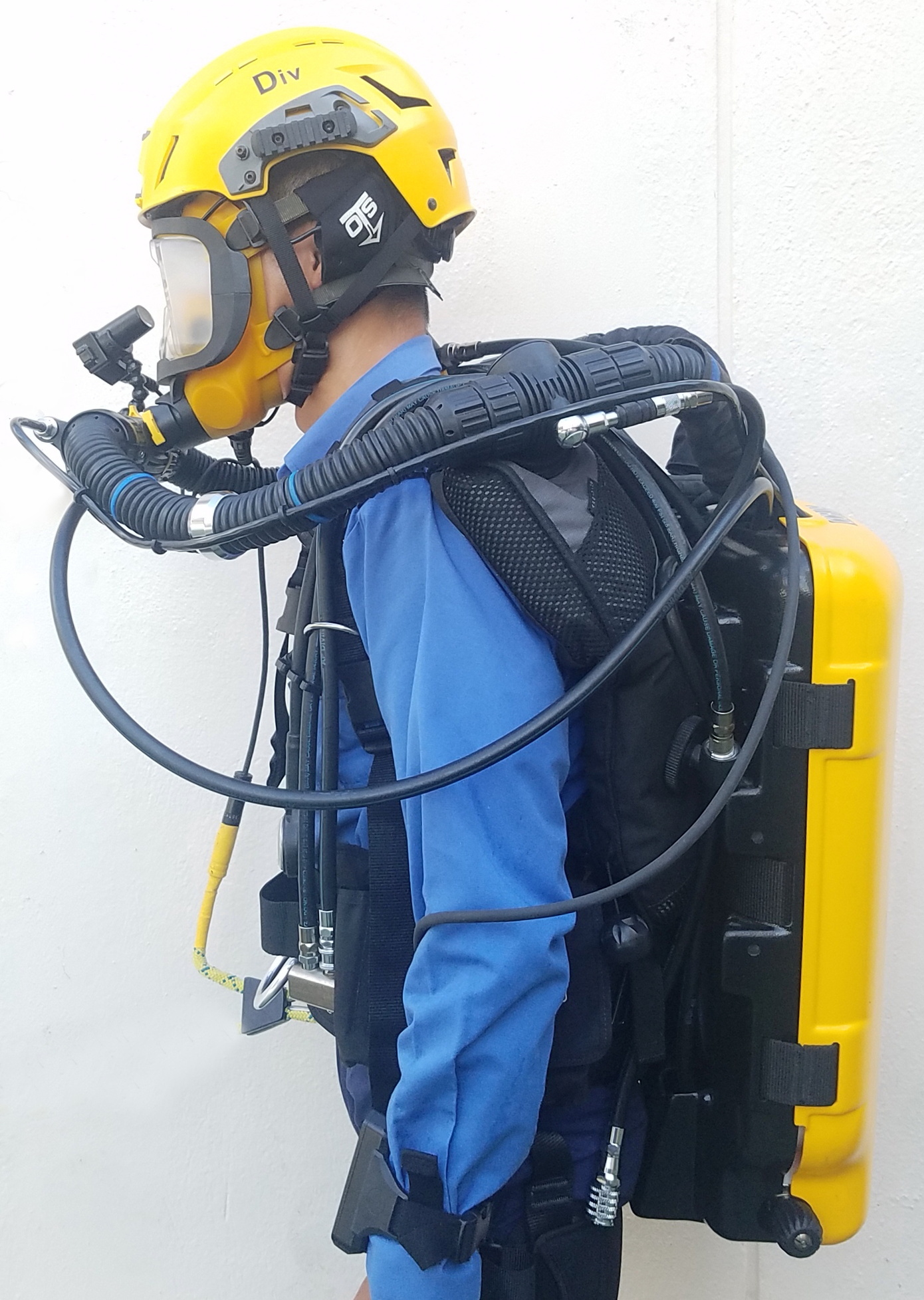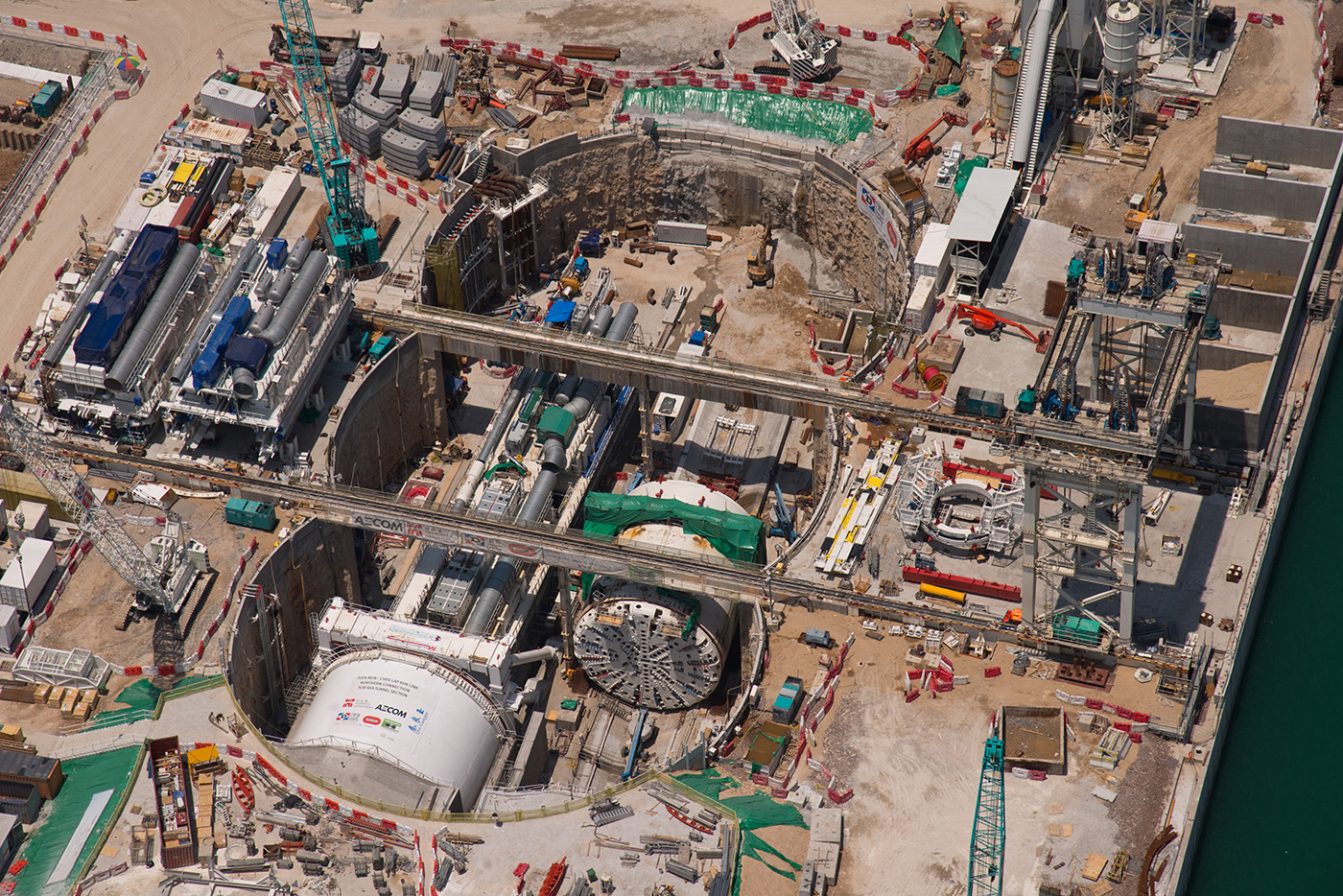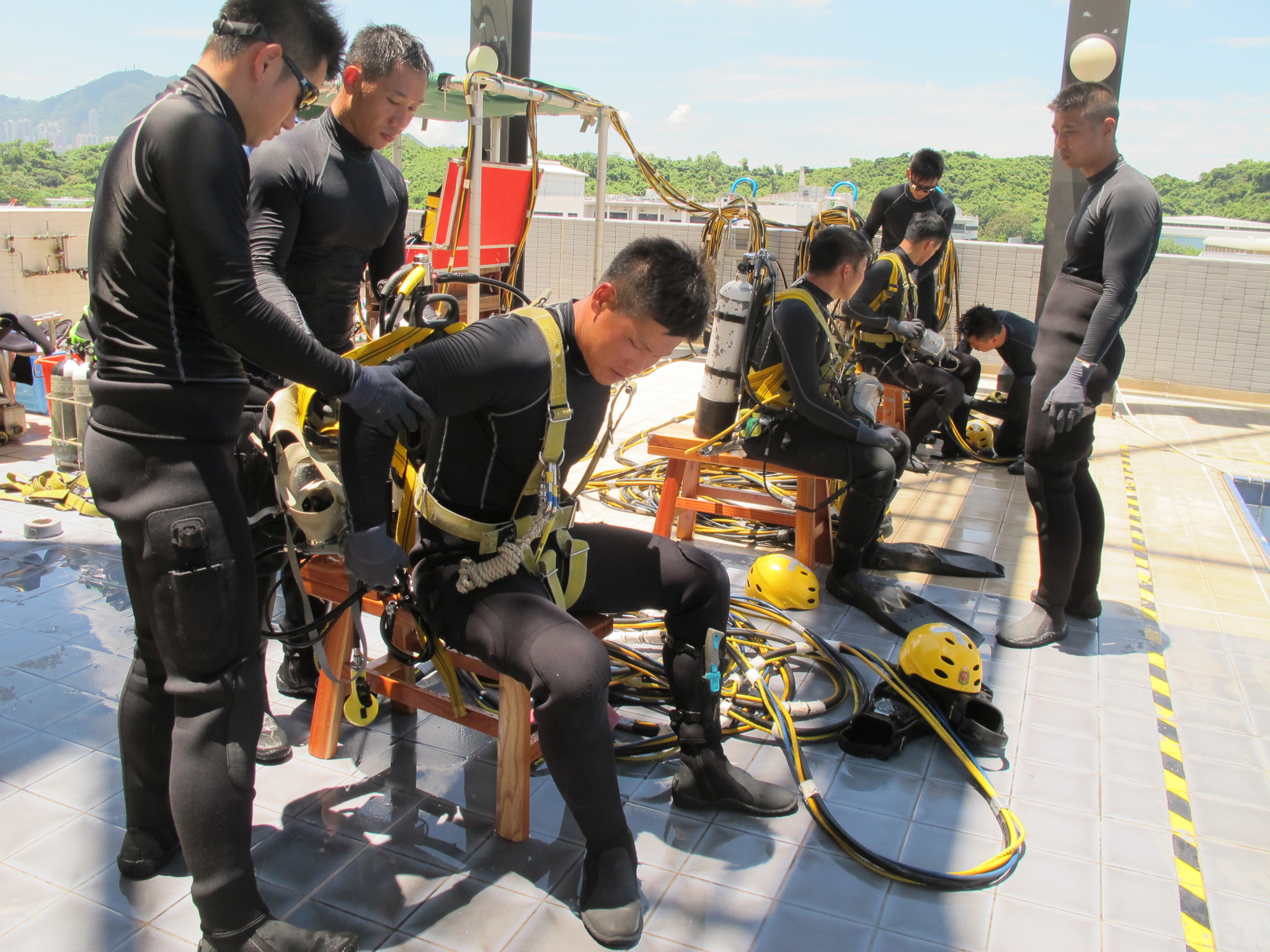Getting in Gear for Deep and Shallow Waters
Fire Services Department
2017
Overcoming Environmental Challenges for a Cutting-edge Project
With the rapid development of society, construction projects have become increasingly complex. Some projects which are conducted under special circumstances have brought unprecedented challenges to departments in charge of regulation and rescue. There is a sub-sea tunnel connecting Tuen Mun and Chek Lap Kok in Hong Kong as a part of the Hong Kong – Zhuhai – Macao Bridge. During the construction of the bridge, the contractors adopt advanced drilling techniques to reduce the amount of sludge produced by the traditional immersed tube method, which greatly minimises the damage to the marine environment.
A new challenge for deep sea rescue
This is only the fifth construction project in the world to adopt “Saturation diving mode techniques” for the submarine tunnel boring works and the first time that this technology is used in Hong Kong. During the construction phase, the pressure around the drill bit tool is six times as high as the atmospheric pressure to prevent seawater infiltration and loss of soil. In an enclosed and pressurised environment, workers and rescuers are always exposed to the threat of a fatal accident. Initially, Hong Kong lacked relevant experience and solutions to conduct rescue services while the contractors could only put forward a few workers who were qualified as diver medic technicians. As such, the Labour Department did not approve this project due to safety concerns. In view of this, the Hong Kong Fire Services Department (FSD) proactively stepped up its efforts to manage the problem with their professional knowledge and expertise, in order to meet the safety requirements of the project.
To prevent accidents, FSD collaborated with the Labour Department and the Highways Department to develop regulatory and safety guidelines. International Safety standards of tunnels and pressurized projects were taken into consideration to design contingency plans for the project staff.
Improved equipment to make the impossible possible
FSD carefully selected staff for special training and set up the Special Rescue Team (SRT), the first rescue team globally for saturation diving mode projects. Eight Diving Officers of the Diving Unit were sent to attend Trimix diver instructor courses in France as no such courses were available in Hong Kong. They then trained over 100 divers in the Unit after completing the courses. To better leverage government resources and reduce training costs, the Diving Unit designed different training scenarios to simulate real rescue situations by adapting the original facilities at the Ngong Shuen Chau Diving Base to meet the new training requirements.
The Diving Unit also remodelled a “Closed-circuit rebreather” to complement the “Trimix deep dive mode” and applied it for the first time in a pressurised dry land environment of a tunnelling site. This greatly reduces rescuers’ risks in a high-pressure environment and enables them to conduct rescue services over extended hours.
The same techniques and solutions can now be applied to other rescue services in underwater and underground construction projects. FSD has demonstrated that it is open to new challenges and excels at overcoming the difficulties of conducting complicated rescue missions. With its superb efforts, the department has provided powerful backing for local construction projects and overall social development.



